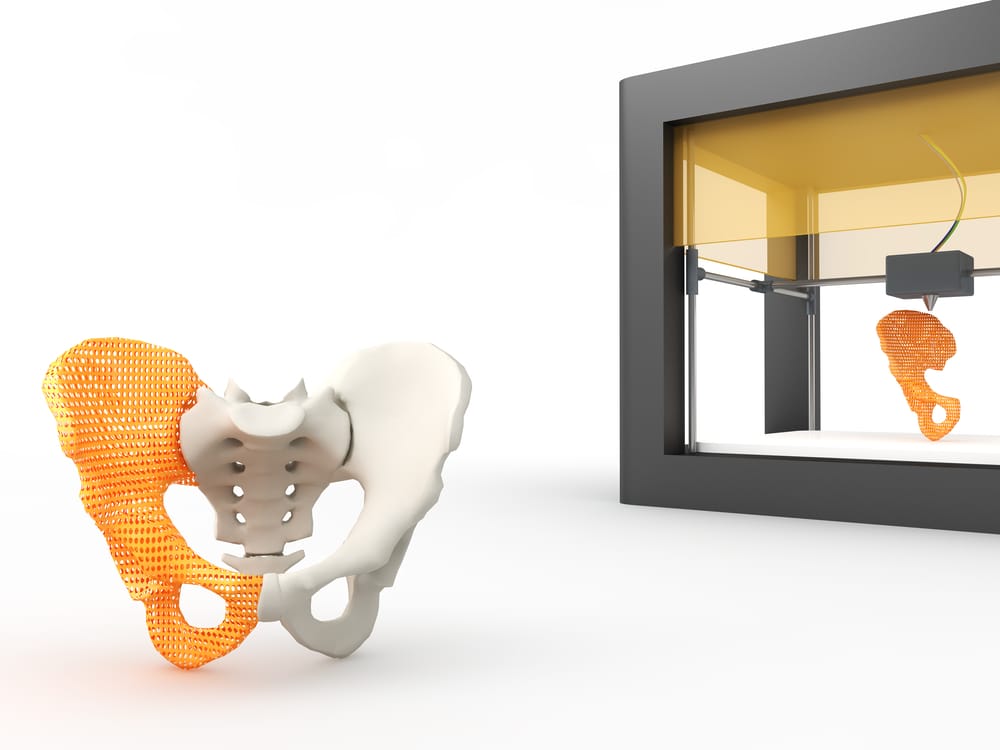In the past few years, most of us have become familiar with the concept of 3D printing: creating objects by printing layer after layer of material on top of each other. The Leuven-based company Materialise believes 3D printing is all about ideas. Inspiration is an important factor in 3D printing. You have an idea of an object, you turn it into a design on your computer and you make the object printable.
While this sounds simple, 3D printing is not just a matter of pushing the print button: There is an entire process that needs to be mastered. “The printing of the object itself is the last step, and probably not even the most important one,” says Bram Smits, Public Affairs Officer at Materialise. “The idea first needs to be translated into a model, the model needs to be sliced into layers to print, the object then needs to be printed correctly and finally, there needs to be a control to ensure that the printed object matches its computer model. This entire process flow is much more complicated than most people believe. For medical applications, for example, the transition from CT or MRI images to a correct model is incredibly important. If the model isn’t 100% sound, problems will arise, so a lot of extensive and specialized knowledge is needed to interpret and translate these medical images to a computer model. Afterwards, a suitable 3D printer needs to be selected, and there are many types of printers to choose from.”
It means we can personalize almost for free.
Personalization is a piece of cake
An important aspect of 3D printing is that the cost is mainly determined by the material you wish to use for the printing process, not by the complexity of the object to be printed. This means that complexity is essentially free.
Another central characteristic of 3D printing is that the first copy of an object that is printed will cost the same as the one thousandth copy of that object. This is not the case with many production processes, such as car assembly lines, where the production of large quantities results in a lower cost per unit. This aspect is important for medical applications. “It means we can personalize almost for free,” Smits explains. “One of the first markets we targeted in the medical field was hearing aids. At this moment, 99% of all hearing aids are 3D printed. This is because hearing aids are small, so they don’t need a lot of material to produce, and they can be personalized. The patient’s ear can easily be scanned to generate a personal model for a fully customized hearing aid. Similar concepts are being used to create personalized insoles entirely adapted to the feet of the wearer.”
Guiding surgery
3D printing can also make a significant difference in the hospital environment, according to Smits: “Take the example of heart models. In some cases, it is very difficult for surgeons to observe heart problems on CT or MRI scans. This is the case, for instance, in infants with congenital heart problems, the number one cause of death during the first year of life. The surgeon can then only observe the problem during the actual surgery. With 3D printing, we can create heart models based on CT or MRI scans. This allows surgeons to review the heart in 3D, plan the surgical procedure and identify possible complications before the patient is actually on the operating table. This not only reduces operating time and costs, but also drastically reduces the chance of complications.”
3D printing can even be used to help plan surgeries. Surgical guides can be printed to indicate exactly where a surgeon needs to drill or manipulate bones to guarantee a correct recovery of the patient. Also, the partial replacement or enhancement of bones with 3D-printed parts can solve many orthopedic issues, such as the placement of hip implants, in a very patient-specific way. The power of 3D printing in the medical world cannot be underestimated, since many medical applications of 3D printing are relevant for niche patient groups who can’t be treated with conventional methods.
Of course, 3D printing still faces some questions. At this point, it is unclear how private companies and hospitals can work together most efficiently. Smits explains: “Some hospitals prefer to simply send the medical images and let the printing company develop the model and print the requested object. Others develop the model in house and only use the actual printing services. Also, regulations regarding quality control [QC] are unclear. The EU distinguishes between mass-produced devices, which have a hefty set of regulatory guidelines, and customized devices, for which regulations are more flexible. 3D printing constitutes a grey zone in between the two — namely, mass customization. There is no obligatory QC for 3D printing at the moment; however, we implement our own QC to guarantee that high-quality products are being produced. Another problem 3D printing is facing involves gathering evidence for medical applications: How can we prove whether a medical device works if every single device is different? Double-blind comparisons are impossible, and large-scale statistical research and analysis is difficult when servicing small niche patient groups. These questions require a clear response from regulatory bodies in the near future.”
Despite challenges inherent to many new technologies, 3D printing promises to bring innovations to the medical realm in a refreshing and unique way.
This article is a report of the keynote presentation by Bram Smits, Public Affairs Officer, Materialise, on the Janssen – FlandersBio Partnerday, March 3, 2016


